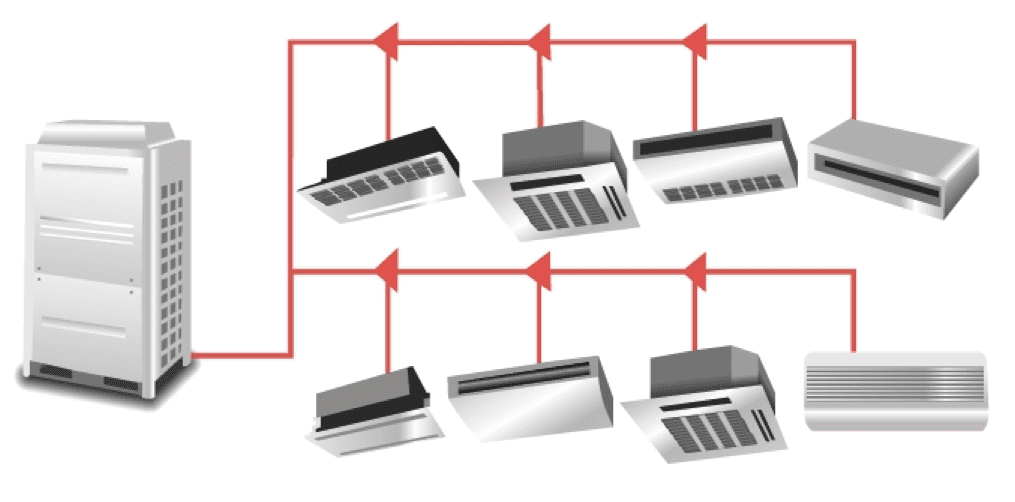The indoor climate of a building is one of the most important aspects that will determine whether tenants will be comfortable and satisfied.
The backbone of this comfort lies in an efficient HVAC (Heating, Ventilation, and Air Conditioning) system. Several areas with different demands make heating and cooling complicated. It is here that advanced HVAC solutions bring excellent benefits.
In this article, learn about how HVAC systems work in multi-tenant buildings and the advantages they bring to property owners, managers, and tenants alike.
The Challenges of HVAC in Multi-Tenant Buildings
The common challenges caused by multi-tenant buildings, whether residential or commercial, often have to do with the variation in space configurations, usage patterns, and temperature preferences.
Traditional HVAC systems are normally unable to give equal attention to temperature control for all types of diverse spaces. While some areas may need more cooling, others may need heating; this creates an imbalance.
Moreover, it is always tough to keep the system energy efficient by continuously managing these different needs.
The Role of Modern HVAC Systems in Multi-Tenant Buildings
To respond to all these challenges, modern HVAC systems have evolved in a way to provide more flexibility, control, and energy efficiency.
One of these solutions is the VRF AC system, which offers zoning, especially different areas of the building that can be heated or cooled independently as per their particular needs.
It also features variable refrigerant flow, which means the system can change the amount of refrigerant flowing to the indoor units depending on the load demand. This makes it suitable for multi-tenant buildings.
Why Choose an Advanced HVAC System for Multi-Tenant Buildings?
The important benefits that a VRF AC system has over other traditional systems, hence perfectly suiting multi-tenant buildings, include:
- Zoning Flexibility: The best part about this system is the zoning capability. This allows every tenant or each section of the building to have independent temperature control for the comfort of each occupant. Be it a commercial tenant needing cooler temperatures or a residential tenant wanting heat, it can handle each separately without affecting the whole building.
- Energy Efficiency: It has become known for its energy efficiency. In a traditional HVAC system, the run is at full capacity despite demand, hence wasting lots of energy in unoccupied or less-used areas. The system, on the contrary, automatically adjusts energy consumption based on the required cooling or heating in every zone. This saves not only money on energy bills but also reduces the environmental footprint of the building.
- Space Saving: They are relatively compact and flexible, so they fit easily into multi-tenant buildings where space is a commodity. Traditional systems use more space due to larger ductwork and the number of compressors; in contrast, the systems save space with a smaller network of pipes and external units.
Seamless Integration with Building Design
This can be integrated into the design of a multi-tenant building with relative ease since it is modular in nature.
This means that as a building expands or undergoes renovation, the HVAC system can easily be scaled to meet new demands.
The flexibility in design makes it an excellent choice for buildings where requirements change over time, ensuring longevity and adaptability.
Maintenance and Longevity of Advanced HVAC Systems
Because there are fewer moving parts involved with an advanced HVAC system than traditional HVACs, it causes less wear on the systems.
The system’s lower upkeep requirements and a properly being cared-for environment, tend to maintain system functionality better than AC.
It allows extended performance, and longevity of operations without as many needed repair parts for air conditioners of more inefficient air-con brands and other climate-controlled installations.
Conclusion
The HVAC systems are among those aspects considered to have great importance in ensuring comfort and efficiency in multi-tenant buildings.
As a relatively new solution to the problems of zoning, energy efficiency, and space management, the VRF AC system presents an intelligent solution.
Given its ability to meet individual needs, reduce energy consumption, and fit seamlessly into building designs, there is little wonder that systems are fast becoming the preferred choice in multi-tenant properties.
Whether it’s a commercial space or a residential complex, the investment in it can change the game for your building in terms of comfort, efficiency, and sustainability.
